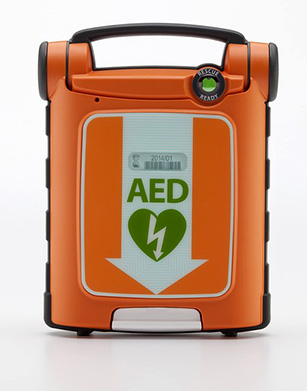SportsMed: The value of core stability
The “core” is a complex of joints and musculature that stabilizes the lumbar spine, pelvis and the hips, which provides a foundation for extremity movement and sport performance. Just as the “keystone” is the critical structural component of an arch, the core is critical to the structure and function of the entire musculoskeletal system.
 The term “keystone” figuratively describes a central supporting element to a larger structure. This analogy conveys the core’s structural importance to the body and, subsequently, to sport performance and injury prevention.
The term “keystone” figuratively describes a central supporting element to a larger structure. This analogy conveys the core’s structural importance to the body and, subsequently, to sport performance and injury prevention.
Muscle strength is frequently targeted in core-stability programs. Strength is important; however, weakness is rarely the cause of low-back problems. To the contrary, muscle resistance to fatigue (endurance) and proper timing of muscle activation are usually impaired and must be remediated. Otherwise, the core will not provide a stable base for extremity movement, nor efficiently absorb forces transmitted through the extremities during complex multi-joint activities.
Imagine pitching a baseball without using your core musculature. A pitcher who throws a 90 mph fastball is rotating the shoulder internally at a velocity that exceeds 6,000 degrees per second. The speed of the pitch does not come from the throwing arm alone. This repetitive feat is unattainable without the transfer of energy from the ground and lower extremities, to the upper extremity, which must be transferred through the core.
A poorly conditioned core and poor throwing mechanics can combine to produce abnormal joint displacements, leading to altered performance and ultimately injury of the upper extremity.
Core and extremities
The baseball pitcher example implies a relationship between the core and the extremities. Although sports medicine clinicians and strength-and-conditioning specialists have suspected this link for years, convincing evidence that strongly demonstrates this association was documented only years ago.
Fatigue or dysfunction of the core has been associated with impaired activation of the low back, abdominal and quadriceps muscles, alteration of body posture, and ultimately, an increased risk of injury to the back and lower extremities. Specific lower-extremity injury risk has been demonstrated in the pelvic muscles (hip flexors and adductors and hamstrings), as well as the knee and ankle joints. There also is growing evidence that links core dysfunction to upper-extremity injury risk.
Approximately 85 percent of the population experiences an episode of low-back pain (LBP) in their lifetime, with the greatest level of activity limitation occurring under the age of 45, and with a very high rate of episode recurrence. Pinpointing the underlying cause of LBP can be difficult, due to the multi-factorial nature of the condition, including a strong psychosocial component.
 Regardless of the cause, there are very predictable changes that occur in the core musculature from even a first-time episode. For instance, the transverse abdominis, a key core-stabilizing muscle, undergoes specific changes (i.e., delayed activation and intermittent firing), which eliminate the protective role of this muscle. The multifidus muscle group in the low back also experiences pathologic changes, such as atrophy and changes in muscle-fiber type, severely hampering its important stabilizing function.
Regardless of the cause, there are very predictable changes that occur in the core musculature from even a first-time episode. For instance, the transverse abdominis, a key core-stabilizing muscle, undergoes specific changes (i.e., delayed activation and intermittent firing), which eliminate the protective role of this muscle. The multifidus muscle group in the low back also experiences pathologic changes, such as atrophy and changes in muscle-fiber type, severely hampering its important stabilizing function.
Sports medicine clinicians, coaches and the athletes must understand that whether the episode results from a back muscle strain or ligament sprain, or an inter vertebral disc injury, these changes have been consistently found and must be addressed.
A common misconception is that a single muscle provides the necessary stability to the core and this muscle becomes the focus of the conditioning or rehabilitation program. No single muscle dominates in the development of core stability. Individual roles of the muscles (both deep and superficial muscles), change continuously during performance of a given movement pattern. The transverse abdominis and multifidus muscles have been identified as key stabilizing muscles that undergo pathological changes as a result of low-back pain.
These deficits do not automatically resolve when pain lessens, so specific exercises must be performed to target these muscles. This focus, however, must not occur at the expense of other muscles of the core, but should be a part of a comprehensive, progressive program that is tailored to the performance capabilities of the athlete.
Problem prevention
As with all injuries, the primary focus must be on prevention. Prevention not only includes conditioning programs and emphasis on proper technique, but should also include the identification of an athlete’s risk for injury.
Injury risk can be identified through assessment combined with the knowledge of previous injury history. Previous history is the strongest predictor of the likelihood of future injury. Measures related to core stability can identify individual athletes who have elevated risk for back and lower-extremity injury. Core endurance tests (held for a maximum of 300 seconds), such as the back extension, trunk flexion, side bridge and wall sit, are easy to perform and can be done in the preseason.
Interventions can be developed to modify risk, thereby decreasing injury predisposition. Research evidence strongly supports the value of targeted training for improvement of neuromuscular control of the trunk and lower extremities.
Understanding the “keystone” function of the core is an important piece of the injury-prevention puzzle. Identification of injury-risk factors, and implementation of a comprehensive, progressive core-stability program to address these risks, are other important pieces.
To complete the picture, however, thorough injury documentation, by the sports medicine staff, must be maintained to determine the impact of intervention programs. Injuries need to be tracked prospectively and compared to injury data from previous seasons.
Our research has demonstrated that poor performance on core endurance tests and unresolved low-back symptoms double the risk for strain or sprain of the core or lower extremity in football players. For players who have a high degree of game participation, the risk is three times greater than that for players who have a low-risk profile.
SportsMed appears regularly in Coach & Athletic Director magazine, offering tips on athlete health and injury prevention.





